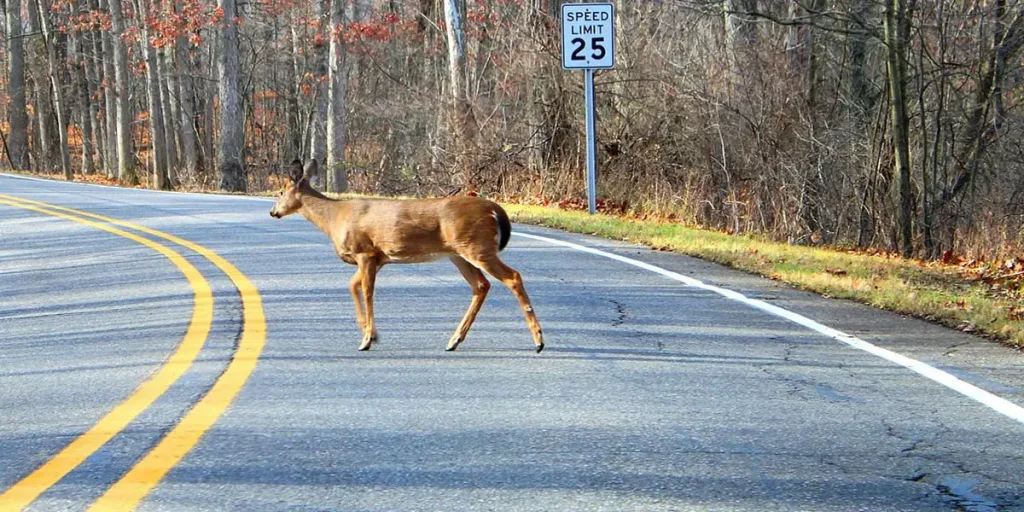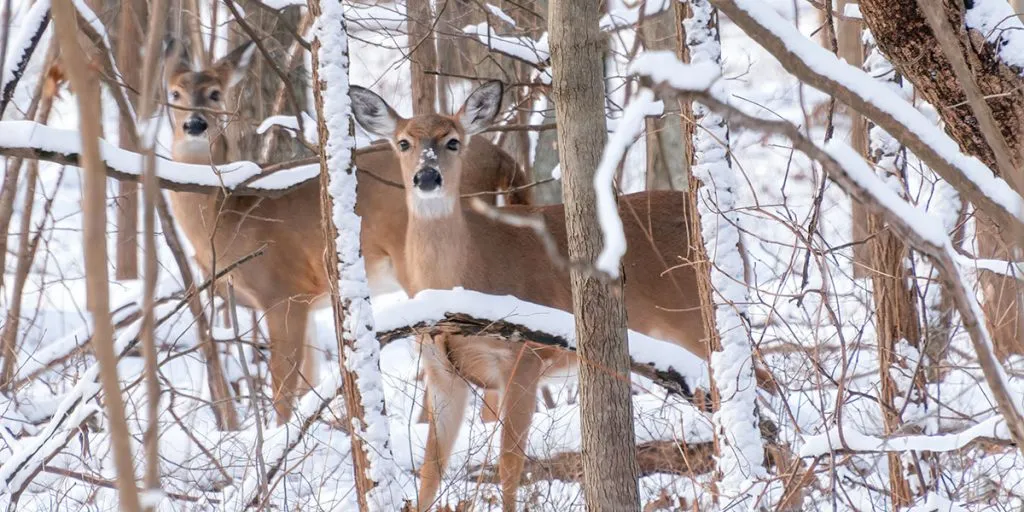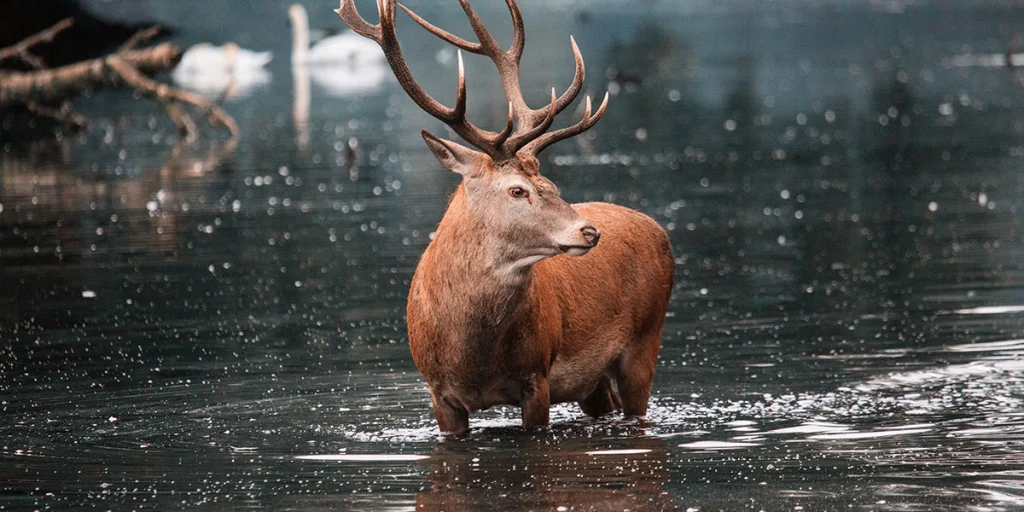Accidents happen. If you just hit a deer with your car, it is important to collect your thoughts and act quickly. Remind yourself to stay calm, focus, and act fast. While usually non-fatal, deer collisions commonly cause injuries to both drivers and passengers.
Your personal health and safety are priority number one in any car crash.
Even when nobody seems injured, it is important to call emergency services immediately to ensure road safety for everyone. The overview below provides you with key actionable steps to take when you just hit a deer with your vehicle.
1. Get To Safety
The second you notice a deer hit your vehicle, your personal safety should be your highest priority. If possible, move your vehicle off the road as soon as you can. Oncoming traffic still poses an immediate threat to yourself and your passengers.
If your car no longer works or is unable to get to the side of the road, call in the help of others to tow your vehicle to the side.
Use light signals to warn any oncoming traffic of your presence. Press the emergency lights button, it can be found on the dashboard of your vehicle. The button for your hazard lights should have a red or orange color and be shaped like a triangle.
2. Call Emergency Services
Do NOT skip this step. Even when only property damage is visible, you should always call 911. All deer-vehicle collisions require the involvement of the authorities. While checking for injuries, you should already be dialing emergency services.
The dispatcher on the phone will guide you through the entire process.
Clearly and calmly explain the situation and answer the questions that are being asked. Follow any instructions that are being provided to you, especially pay attention to health-related instructions when injuries are involved in the accident.
3. Check For Injuries
While calling emergency services, quickly scan your own body to see if there is any blood, and move your limbs to see if everything still works as it should. The adrenaline might be suppressing most of your pain, so it’s important to double-check all of this.
Once you know you aren’t seriously injured, move your attention to any passengers that might be in the vehicle. Verbally confirm with them they are all okay and make them double-check this.
Only afterward, take a moment to check up on the deer you’ve just hit with your vehicle. Never touch an injured or deceased deer for any reason. Many wild animals are infected with a variety of parasites, viruses, and bacteria. These can be dangerous to your health.
4. Set Up Warning Signals
While waiting on the authorities, primarily focus your attention on those that are injured. When injuries are mild and you feel like you can shift your attention for a moment, road safety should be your main concern. This is especially important when it’s dark outside.
To ensure road safety and avoid further collisions with oncoming traffic, collect the reflective safety triangle from your vehicle and place it several yards behind your vehicle. Put on a reflective safety vest or any other reflective wristbands, if these are available.
The purpose is to make yourself as visible as possible. This allows other road users to slow down in time, and gives them an opportunity to drive around the scene of the accident. If no reflective warning objects are available, put your car blinkers on and manually wave down oncoming traffic.
5. Write Down Witness Contact Information
If any other road users nearby witnessed the accident, make sure to ask them for their contact details where possible. Anyone that helped you in the time between the deer collision and the moment you left the scene can be relevant later.
Where possible, make sure to write down the name and phone number of the witness.
Your car insurance requires this type of information to verify details about the incident. It also helps them verify the accuracy of the information you submitted. Usually, witness details will be automatically included in police case reports.
6. Make Photos Of The Incident
Deer-vehicle collisions that result in injuries require police to take photos of the incident for their case files. You do not have to worry about taking evidence pictures of the crash if you or your passengers are wounded. Your personal health and taking care of loved ones should be your main priority.
If injuries are very mild or non-existent, take a moment to snap a few photos of the incident yourself, for insurance purposes. Only do this when you feel it is safe to do so.
Focus on the cause of the accident and the resulting damage to your vehicle. We aren’t trying to take pictures for the shock effect, nor do we intend to share these pictures with anyone other than your car insurance company.
7. Call Your Vehicle Insurance
Immediately, or at least within 24 hours of the incident, make sure to call your insurance company to cover your vehicle repairs. If you are unable to do this yourself, let someone do this for you. Vehicle insurance should be called as soon as possible.
Your insurance company will ask you for a lot of information and require you to submit a lot of forms. This might be overwhelming and you might not even want to think about it right now.
However, it is important to document as much of the incident as possible. Request access to the case files at your local police department and use any photos you made of the incident. Police files always need to be submitted to your insurance company when filing a claim.
Always make sure to verify if a car repair shop is covered by your insurance before bringing it in for repairs. Costs can quickly run into thousands of dollars, and you really want your insurance to cover this for you (and maybe let them install a deer alarm to avoid future crashes).
8. Make Sure Your Vehicle Is Safe To Drive
When leaving the scene of the accident with your own vehicle, do not assume your car is safe to drive. Scratches or bumps on the outside of the car might hide some serious car damage under the hood.
Before leaving the scene, check for any fluid leaks, loose parts, tire damage, or strange sounds when starting your engine. If any damage prevents you from safely using the road, call roadside assistance for an emergency repair.
If the damage to your car makes it unsafe to drive, let roadside assistance tow your vehicle away for repairs. Do not drive away from the scene of the accident with a busted-up car, this puts yourself and other road users in unnecessary danger. In some US states, driving away from a deer collission scene is illegal and can be considered a crime.
Featured image adapted from Wikimedia Commons / Dwight Burdette



